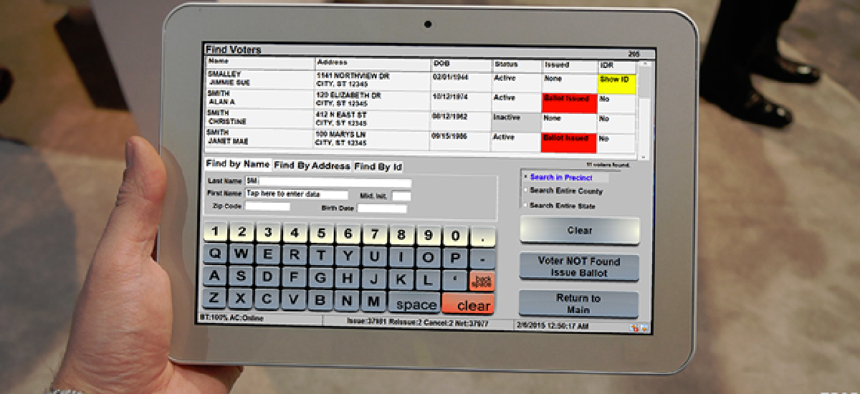Voting technology: Is it secure yet?


Connecting state and local government leaders
With the presidential election coming up in 2016, many constituencies are considering how they can use technology to secure and streamline the voting process.
With the presidential election coming up in 2016, many constituencies are looking to how they can use technology to streamline the voting process. Security of the voting system – both with and without technology – remains a question.
One method gaining support is to secure the voting process by moving to open source software. The TrustTheVote Project wants open source technology used from the top down, in voter registration, voter information services, ballot design, the foundations of ballot tabulation, election results reporting and analysis and elements of auditing.
The initiative is the flagship project of the Open Source Election Technology Foundation (OSET), which wants to have a demonstrable impact on the 2016 elections. “Our nation's elections systems and technology are woefully antiquated. They are officially obsolete," Greg Miller, chair of OSET told the Anne Babe of the Huffington Post.
Three companies, Election System and Software (ES&S), Dominion Voting Systems and Hart InterCivic, dominate the voting machine market and have little incentive to update their systems, reported Babe. Further, election data standards are at least a decade old. The result is that election administrators are buying outdated machines.
Moving to an open source format would encourage tech-savvy groups and individuals to verify the integrity of the voting system, assure accountability and get more voters to the polls. The idea is that the more widely available open software is, the more scrutiny it will receive, the more flaws will be surfaced and the stronger the code will be. “Make that machine a glass box instead of a black box,” said Miller.
But open source code isn’t always regularly reviewed nor is its security verified. Such assumptions can lead to vulnerabilities, like the Heartbleed bug.
In lieu of actual voting technology, a popular tool being adopted by jurisdictions around the country is electronic polling books. E-poll books allow election officials to review and process voter information but not actually record or count votes. Currently 30 jurisdictions use e-poll books, according to the National Conference of State Legislatures.
E-poll books come in either laptop or tablet form and go beyond the capabilities of paper poll books, which contain a list of eligible voters in the district or precinct. Some additional functions include the ability to:
- Redirect voters to the correct polling location
- Scan a driver’s license to pull up a voter’s information, avoiding data entry error
- Notify poll workers if a voter already voted absentee or during the early voting period
- Electronically sign-in voters
- Produce turnout numbers and lists of who voted.
The technology has been adopted differently across jurisdictions.
Recently Microsoft announced that ES&S chose a Windows tablet (the 10-inch Toshiba Encore 2) for its newest poll books - the ExpressPoll Pollbook Tablet.
Also, In February, the South Dakota Brookings Register reported that Brookings County would be purchasing 39 e-poll books just ahead of its city and school board elections. And in January, DuPage County, Ill. announced it was purchasing e-poll books from Hart InterCivic for cost savings, increased efficiency, accuracy and security, said Robert T. Saar, executive director of the DuPage County Election Commission.
Still, while some view e-poll books as a more secure technology since they don’t connect to the Internet, there can be issues. Hackers could steal identities if personally identifiable information such as Social Security numbers and driver’s license information isn’t encrypted. Or e-poll books could be disabled at a particular location, preventing some people from casting ballots.
"Just because the [e-poll book] computer isn't connected to the Internet it is still on a network which might be connected," said John Sebes of OSET in a 2013 Cleveland.com article.




